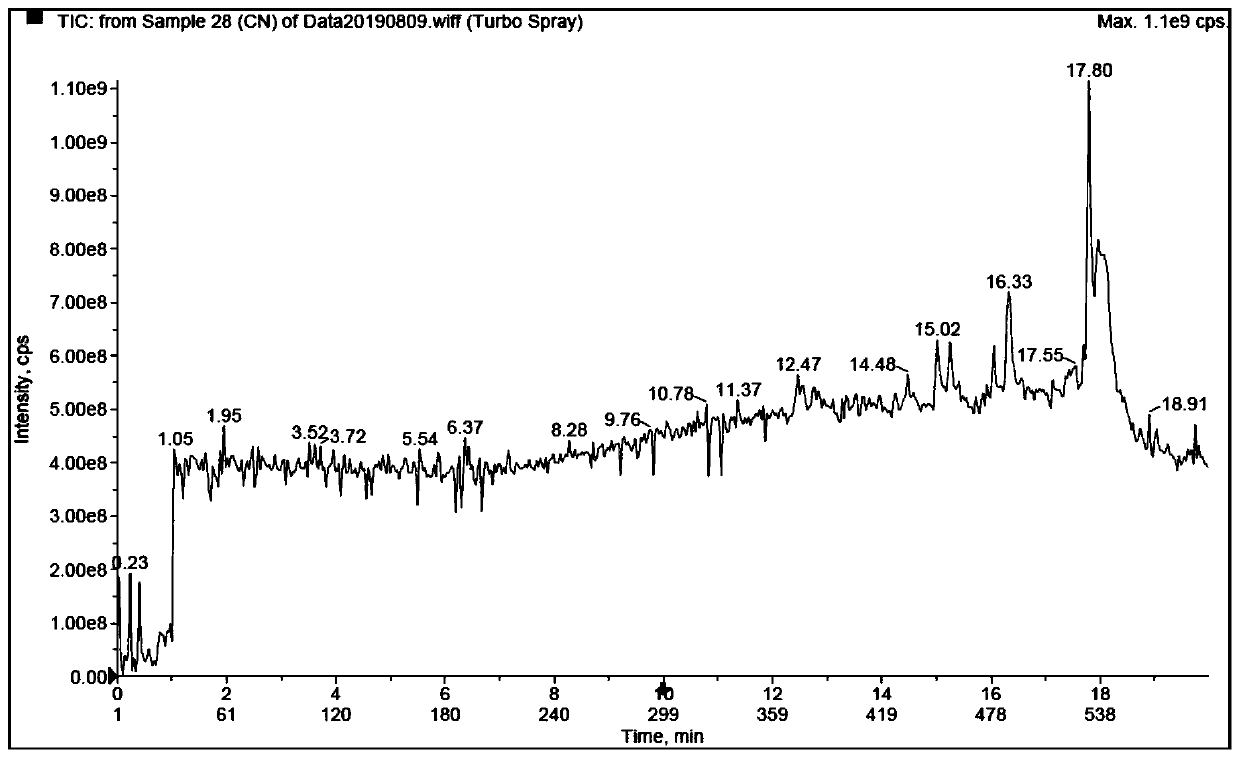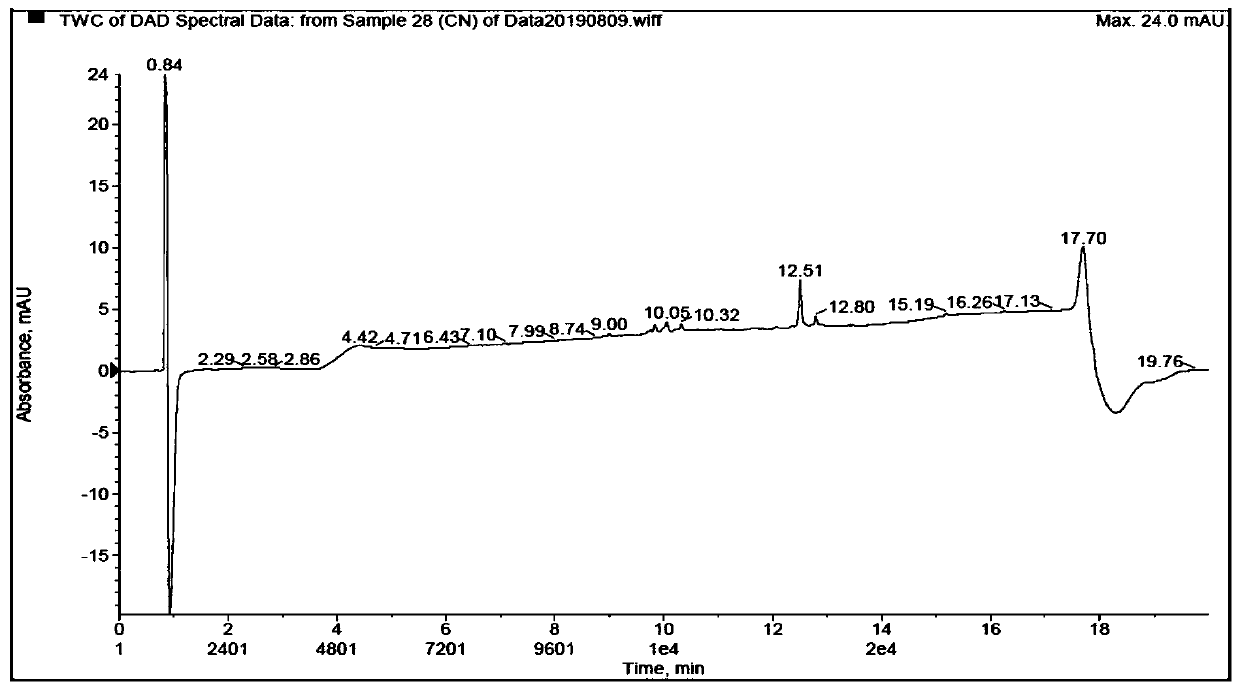Oligopeptide linker intermediate and preparation method thereof
A technology of linker and intermediate, which is applied in the field of preparation method of oligopeptide linker and its intermediate, and can solve problems such as affecting product quality.
- Summary
- Abstract
- Description
- Claims
- Application Information
AI Technical Summary
Problems solved by technology
Method used
Image
Examples
specific Embodiment
[0111] Below in conjunction with specific embodiment, further illustrate the present invention. It should be understood that these examples are only used to illustrate the present invention and are not intended to limit the scope of the present invention. The experimental methods in the following examples that do not indicate specific conditions are usually carried out according to conventional conditions or according to the conditions suggested by the manufacturer, and the reagents that do not indicate specific sources are conventional reagents purchased in the market. All percentages, ratios, ratios, or parts are by weight unless otherwise indicated.
[0112] The unit of weight volume percentage in the present invention is well known to those skilled in the art, for example, it refers to the weight of solute in 100 ml of solution.
[0113] Unless otherwise defined, all professional and scientific terms used herein have the same meanings as those familiar to those skilled in...
Embodiment 1
[0114] Embodiment 1 Teoc protecting group method prepares Val-Cit-PAB
[0115] (1) Preparation of Teoc-Val-Cit
[0116]
[0117] Add 14.16g of 2-(trimethylsilyl)ethanol (120mmol), 38.7g of N,N-diisopropylethylamine (300mmol), 30.4g of bis(p-nitrophenyl)carbonate (100mmol) to a 500mL single-necked bottle ), 400mL of acetonitrile, after the addition was complete, keep stirring at room temperature for 16h to form reaction solution 1. Add 14.08g of L-valine (120mmol) and 25.8g of N,N-diisopropylethylamine (200mmol) into a 1L single-necked bottle, and dissolve them with 400mL of water to form reaction solution 2. The reaction solution 1 was added into the reaction solution 2 under stirring state, and after stirring at room temperature for 16 h, the reaction solution was detected by LC-MS method to complete the reaction. After passing the test, the solvent of the reaction solution was rotary evaporated, and after evaporation to dryness, 500 mL of water was added, and 1 mol / L hy...
Embodiment 2
[0126] Embodiment 2 Cbz protecting group method prepares Val-Cit-PAB
[0127] (1) Preparation of Cbz-Val-Cit
[0128]
[0129] Add 10g of N-benzyloxycarbonyl-L-valine (ie Cbz-Val) (40mmol), 18.2g of N,N,N',N'-tetramethyl-O-(N-succinate Imide) urea tetrafluoroborate (60mmol), 15.5g N,N-diisopropylethylamine (120mmol), 300mL acetonitrile, after adding, stir at room temperature for 4h. After dissolving 7.7g of L-citrulline (44mmol) in 300ml of water, it was added to the above reaction system, stirred at room temperature for 16h, and the sample was detected by LC-MS, and the reaction was completed. While stirring, add 0.1 mol / L hydrochloric acid dropwise to adjust the pH value to 1, evaporate the solvent to dryness, add 800 mL of water, stir at room temperature for 16 h, and filter. After the filter cake was vacuum-dried, 400 mL of ethyl acetate was added, 400 mL of dichloromethane was stirred for 16 h, and then filtered. After the filter cake was vacuum-dried, 200 mL of eth...
PUM
 Login to View More
Login to View More Abstract
Description
Claims
Application Information
 Login to View More
Login to View More - R&D
- Intellectual Property
- Life Sciences
- Materials
- Tech Scout
- Unparalleled Data Quality
- Higher Quality Content
- 60% Fewer Hallucinations
Browse by: Latest US Patents, China's latest patents, Technical Efficacy Thesaurus, Application Domain, Technology Topic, Popular Technical Reports.
© 2025 PatSnap. All rights reserved.Legal|Privacy policy|Modern Slavery Act Transparency Statement|Sitemap|About US| Contact US: help@patsnap.com



